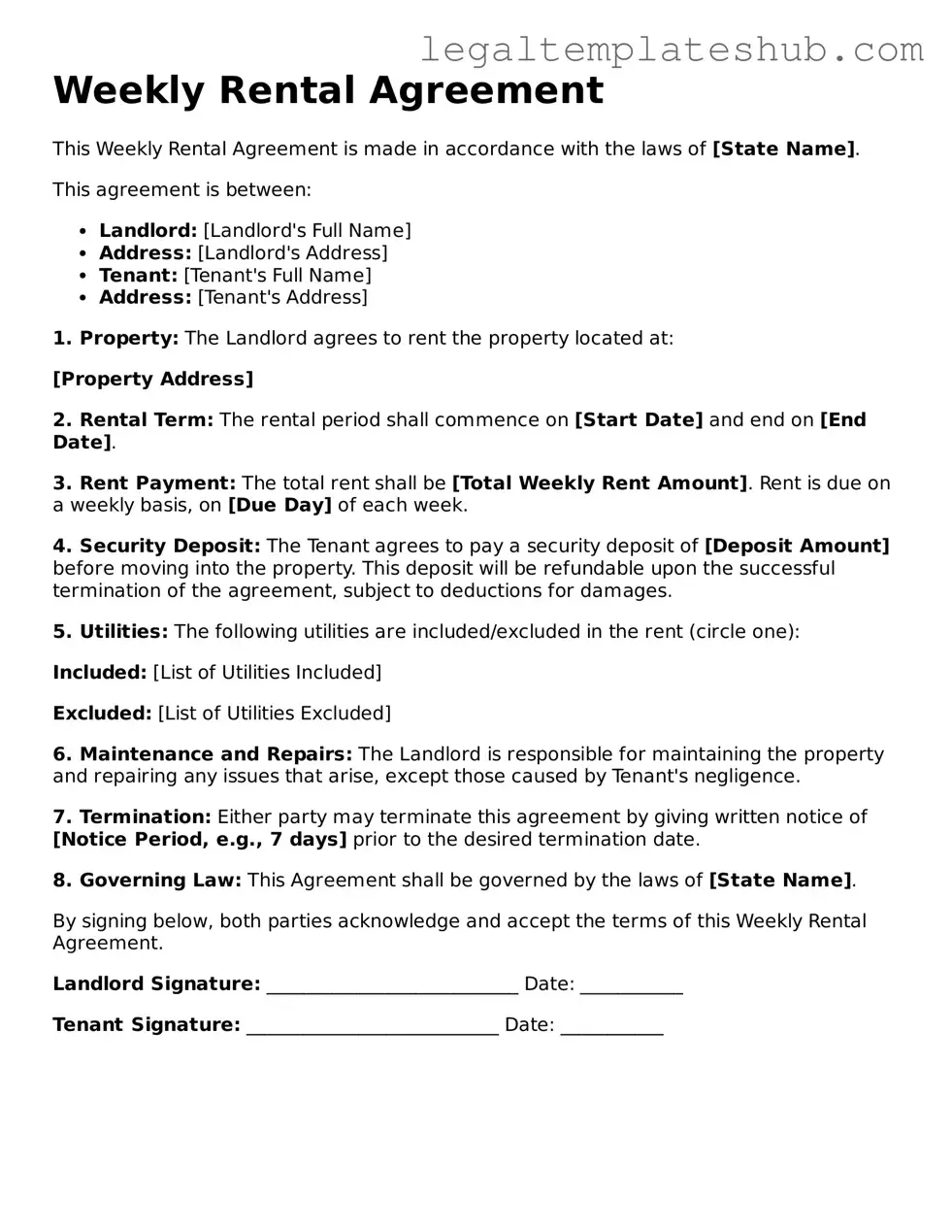Instructions on Filling in Weekly Rental Agreement
Completing the Weekly Rental Agreement form is an essential step in securing a rental arrangement. This process ensures that all necessary information is captured accurately, allowing both parties to understand their responsibilities and expectations. Follow the steps below to fill out the form correctly.
- Obtain the Form: Start by acquiring the Weekly Rental Agreement form. This may be available online or at your local rental office.
- Fill in Personal Information: Provide your full name, address, phone number, and email address at the top of the form.
- Enter Rental Property Details: Specify the address of the rental property you are agreeing to lease. Include any unit or apartment number, if applicable.
- Indicate Rental Dates: Clearly state the start and end dates of the rental period. Make sure these dates align with your agreement.
- Specify Rental Amount: Write down the weekly rental rate. Ensure that this amount matches what was previously discussed.
- List Additional Fees: If there are any additional fees, such as cleaning or security deposits, include those in the designated section.
- Provide Payment Information: Indicate how you plan to make payments, whether by check, credit card, or another method.
- Sign and Date: Finally, sign and date the form at the bottom. This signature confirms your acceptance of the terms outlined in the agreement.
Once you have completed the form, review it carefully for any errors or omissions. After ensuring everything is accurate, submit the form to the appropriate party to finalize your rental agreement.
